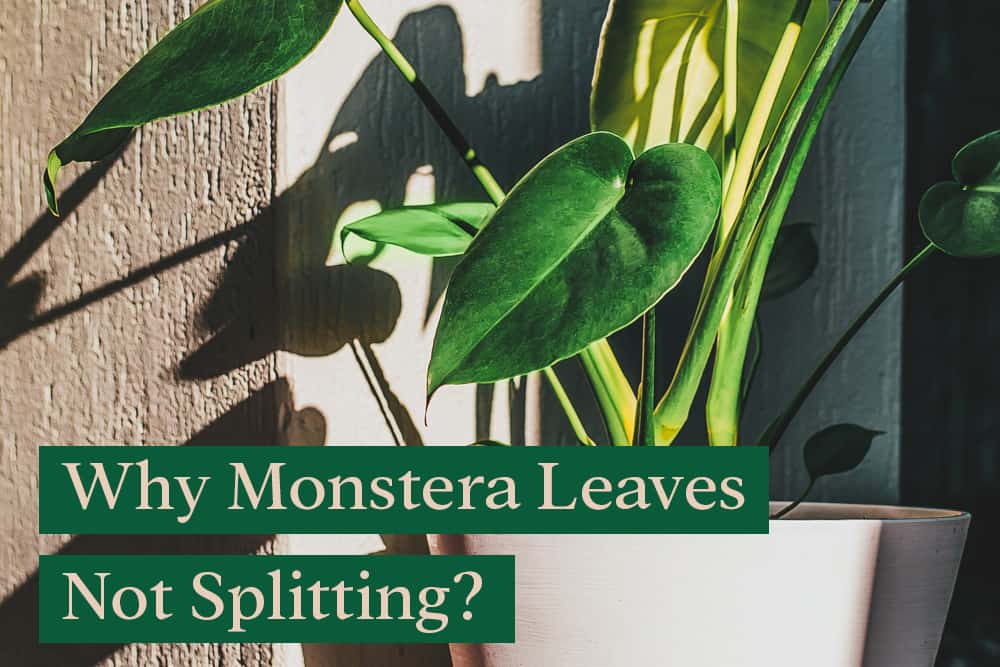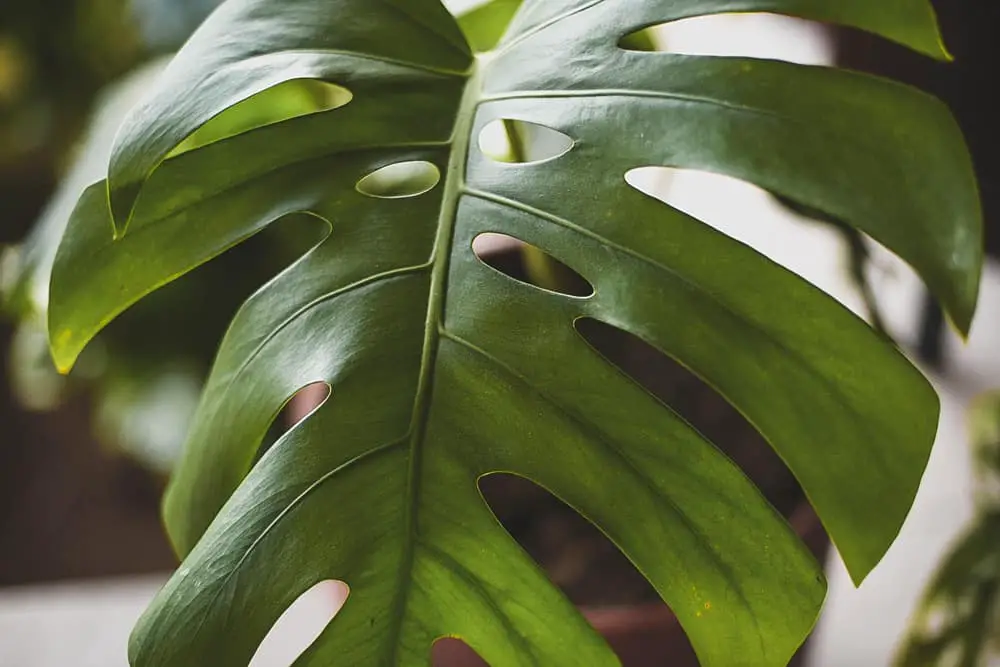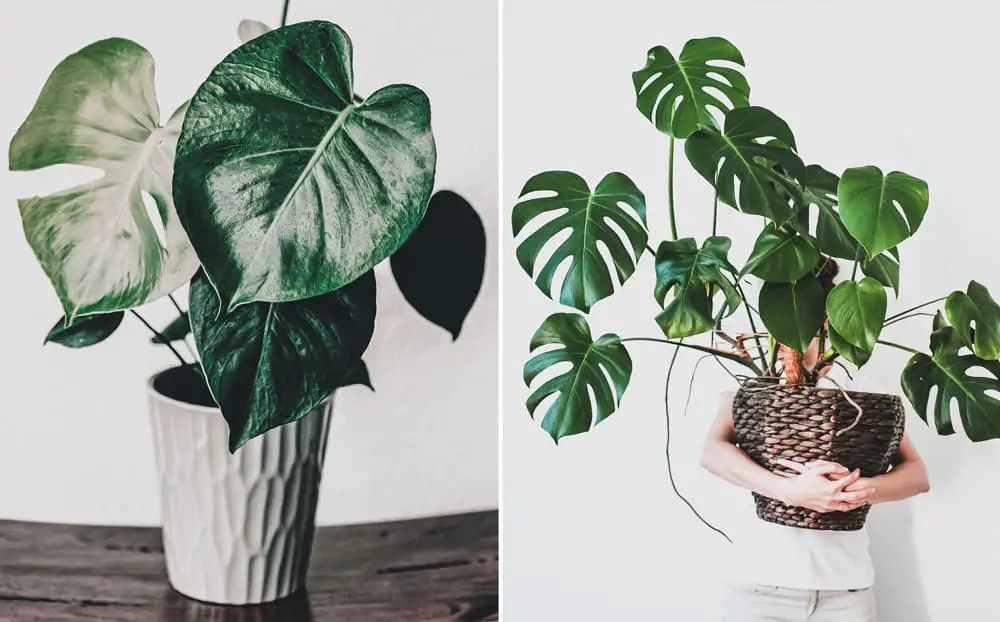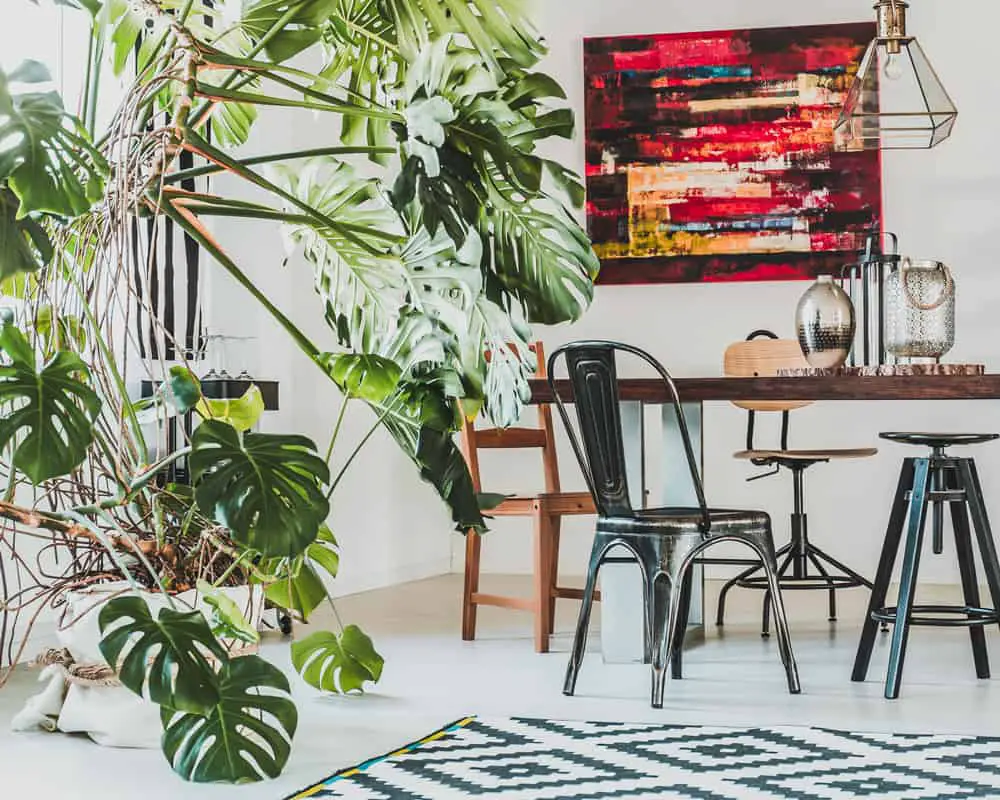
I bet the splits and holes (fenestration) in Monstera leaves is one of its unique characteristics that made you adopt one in the first place.
But it’s been a while, yet your Swiss Cheese Plant hasn’t developed any fenestration. Now you are wondering why is your Monstera leaves not splitting?
With proper care, Monstera leaves start splitting when it’s 2-3 years old. The perfect amount of sunlight, water, humidity, and fertilization is needed to ensure Monstera develops leaf fenestration.
In this in-depth article, you’ll not only learn why your Monstera isn’t splitting, but I’ll also reveal the different growing conditions you’ll need to implement right away.
Let’s get started.
Why Monstera has splits (Fenestration)?

Monstera grows naturally under the rainforest canopy. Split leaves increase the plant’s likelihood of catching as many scattered rays that reach the forest floor.
That said, quite a few other theories have been put forward to explain fenestration in monstera.
Withstand Strong Winds
Again, this has all to do with the natural habitat. The rainforest regions aren’t short of hurricanes. And while humans seem like they’re the most affected, plants too have to brace for the ensuing, often destructive winds.
To minimize the effects of the onslaught, it has been suggested that monstera has split leaves, which essentially reduces the surface area on which the winds can act. Naturally, this reduces the general impact of the strong winds.
But this explanation falls short when you consider other millions of plants that call the tropical rainforests their home. Most of them don’t exhibit fenestration, yet they’re still thriving, hurricanes notwithstanding.
Improve Access to Water
The thinking here is dependent, again, on the rainforest habitat that these plants naturally grow in.
The split leaves allow water to trickle down unhindered and hopefully reach the plant’s roots. But this will only make sense if the tropical rainforests weren’t getting enough rainfall. That’s certainly not the case.
Absorb Sunlight
Light needs remain the more likely explanation for fenestration in monstera.
By having leaves with splits and holes, Monsteras has foliage that covers a greater area and thus captures more sunlight.
Incredible, isn’t it?
Reasons for Monstera Leaves Not Splitting
I know you expect your young Monstera to have split leaves when adopting one. But why is Your Monstera leaves not splitting?
Your Monstera is probably has not aged yet or it does not get the proper care it need. Its leaves usually start to split after the plant is 2 years old and has receive proper lighting, watering and fertilizers.
But, if your Monstera doesn’t split up even when it’s more than three years, you’re probably doing something wrong (or maybe, you have mistakenly another plant for a Monstera).

Monstera is Still Too Young
Age is an essential factor to look at if your monstera leaves are not splitting. You surely don’t expect a juvenile monstera plant to start splitting leaves.
The simple truth is fenestration doesn’t occur until the plant is at least two years old. So if your beauty is not there yet, give it time. And if it doesn’t split at two years, allow it another year before you start speculating about a problem.
But if you’ve waited three years and your Monstera shows no sign of fenestration, it’s time to look at your care regimen.
Monstera Need Proper Care
Splitting leaves is part of the general development process of a monstera plant. That means the care you accord your plant is just as crucial if you ever want to see those holey leaves.
And if you’re not seeing them even when your plant is older than three years, it’s certainly time to consider the amount of light, fertilizer, and humidity your plant is getting.
That’ll be more than enough to get it back on track to fenestration.
Tips to Encourage Fenestration on a Monstera?

Split leaves are a coveted characteristic of Monstera. Here’s how you can ensure your plant achieves that.
1. Allow Bright, Indirect Sunlight Exposure
Light ranks high up there among all the factors that encourage fenestration on a monstera.
Most Monstera plants that I know fail to fenestrate are often placed in a shady area of the house with very little sunlight.
The inadequate light will also be reflected in the plant’s general pale to yellowish leaves.
You certainly don’t want that.
Make sure your plant is in a well-lit spot, ideally a window. This is easily achievable by having the plant near a south-facing or east-facing window. What you want is your plant to enjoy the light without the risk of getting scorched by direct sun rays.
And if the natural light is not enough, you can grab a grow light to supplement your baby.
Also read: The Complete Guide for Lighting a Monstera
2. Consistent Watering Once a Week
As a tropical plant, Monstera loves water. It’s only natural considering the heavy rains the rainforests experience most of the year.
As a houseplant owner, you have to keep up with these water requirements. For a larger part, this will entail watering your Monstera every once a week.
But if you can’t keep track of the days, you can use your finger or a soil meter to test how wet or dry the soil is before watering.
As a rule, you should never leave the soil to dry out completely. I water my Monstera when the reading of the soil meter is at 2 or 3.
3. Feed It with Fertilizers
Monstera needs nutrients just like any other houseplant.
Fertilizing is a sure way of going about this. Just how often you do will depend on the season.
During the Summer and Spring, I fertilize once a month to keep those nutrients going.
But it would be best if you slowed down or completely cut off the fertilizer come Fall and Winter as this is the time when the plant is mainly dormant. Fertilizing will be the equivalent of force-feeding, which of course, won’t do your gorgeous plant any good.
Also Read: Complete Guide on How to Care for your Monstera during the Winter
This also applies after you’ve repotted your Monstera using general houseplant potting soil. The soil already has slow-release nutrients that will be just enough for your plant as it settles in for the first 4-6 months.
You can resume your fertilization spree after this time.
4. Provide Optimum Humidity and Temperature
Generally, Monstera thrives well in both high humidity and high-temperature conditions. The closer you try to mimic these conditions, the better for your plant.
There are quite a few ways of ramping up the humidity in the house for your plant:
- Leave the bathroom and kitchen doors open if possible
- Install a humidifier
- Place bowls of water around the house
Misting your plant also works excellent, although the effect is short-lived. It’s better to do it in the morning as this allows enough time for the leaves to dry out.
Also, be sure to keep your monstera plant away from heating and air-conditioning vents.
For temperature, maintain (that’s if you can) readings above 60° Fahrenheit (16° Celcius).
5. Consider to Repot
Of course, you can’t keep your plant in the same pot forever – at least not if you want it to thrive. Remember, the plant is growing, and it’s only a matter of time before the current pot becomes too small. The roots will significantly be affected since they won’t have much space to stretch.
Here’s how you know your Monstera needs repotting:
- When it is root-bound
- Your Monstera starts showing signs of limp growth
- The roots are appearing from the bottom of the pot.
Besides, the potting soil will run short of nutrients, leading to a dull plant with leaves that don’t split.
For these reasons, repotting Monstera is an absolute necessity. But it doesn’t have to be that often. Usually, once a year is good enough to keep the plant in good shape.
And while at it, remember to use a slightly larger pot than the previous one to cater to that increased growth. Be sure to also keep an eye on the seasons before moving forward.
Spring is by far the best season to repot your plant. This is when the plant is gearing up to grow new leaves.
Also Read: How to Choose the Perfect Pot for Your Monstera
Additional Monstera Care Tips
Though not required, you can occasionally check on the following as far as your monstera is concerned
Pruning
You can cut off the old and withered leaves to encourage better growth and a more pristine look. Pruning is also necessary if you don’t want the stems to be all over the place since monstera is naturally a climber.
Unlike repotting, you can do the pruning anytime regardless of the season unless you’re looking to propagate the cut off pieces. In that case, you’re better off doing the pruning in summer.
Pests and Diseases
Monstera is generally a pest and disease-resistant plant, so it’s improbable that you’ll have to deal with any of the two.
Like most houseplants, it can be attacked by common pests like spider mites, aphids, mealybugs, and thrips. Cotton swabs dipped in insecticidal soap quickly exterminate these pests.
Related Questions
Do monstera leaves split after unfurling? Splits begin to form when the leaves are young as long as the plant is more than three years old.
Do all monstera leaves split? Not all monstera leaves will split. Those that came out when the plant was young will remain unsplit solid until they wither off.

